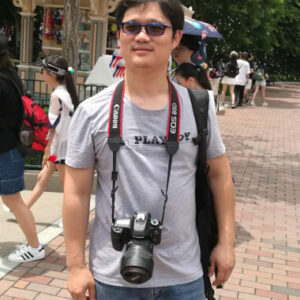Luminous Efficiency Overview
Luminous efficiency is a parameter of a light source, which is the ratio of luminous flux to power. Depending on the situation, this power can refer to the radiant flux output by the light source, or the energy (which can be electrical energy, chemical energy, etc.) to provide the light source. The power in luminous efficiency is usually context-dependent, but in many cases it is not specified.
Conversion of Luminous Efficiency
λ0 and λi are the wavelengths of emission and excitation light respectively. Due to the Stokes shift, there is often a relationship of ηq≥ηp.
Luminous efficiency can also be divided into external efficiency and internal efficiency; external efficiency only considers the ratio of the output light energy to the light energy or electric energy thrown to the illuminant, and is the pure conversion efficiency of the absorbed energy into light energy. Input light is lost due to reflection and reabsorption, so the external efficiency is always smaller (or close to) than the internal efficiency, which is the true parameter reflecting the energy conversion process.
Luminous Efficiency of Fluorescent Lamps
The size of the luminous efficiency reflects the total effect of the internal energy excitation, energy transfer, composite luminescence and non-radiative recombination process of the luminophore. Center) and the integrity of the luminescent crystal, even related to the specific process.
What is Led Luminous Efficiency
Led Luminous Efficiency: generally referred to as the external quantum efficiency of the component, which is the product of the internal quantum efficiency of the component and the extraction efficiency of the component. The so-called internal quantum efficiency of the component is actually the electro-optical conversion efficiency of the component itself, which is mainly related to the characteristics of the component itself (such as the energy band, defects, impurities of the component material), and the barrier crystal composition and structure of the component.The extraction efficiency of a component refers to the number of photons generated inside the component that can actually be measured outside the component after being absorbed, refracted, and reflected by the component itself.
Therefore, the factors related to the extraction efficiency include the absorption of the component material itself, the geometric structure of the component, the refractive index difference between the component and the packaging material, and the scattering characteristics of the component structure.The product of the internal quantum efficiency of the component and the extraction efficiency of the component is the luminous effect of the entire component, that is, the external quantum efficiency of the component.
Early component development focused on improving its internal quantum efficiency. The main method was to improve the quality of the barrier crystal and change the structure of the barrier crystal to make it difficult to convert electrical energy into heat energy, thereby indirectly improving the luminous efficiency of LEDs, so that about 70% of the theory can be obtained. Internal quantum efficiency, but such internal quantum efficiency is almost close to the theoretical limit.Under such circumstances, it is impossible to increase the total light quantity of the module by merely improving the internal quantum efficiency of the module. Therefore, improving the extraction efficiency of the module has become an important research topic.The current methods are mainly: change of grain shape – TIP structure, surface roughening technology.
How Much is the Luminous Efficiency of Led?
The luminous efficacy of the LED = the luminous flux of the LED (that is, the lumen value) divided by (the product of the voltage value and the current under normal current driving).
For example: when the 3528 patch specification is driven by 20mA, the voltage is 3.1V and the luminous flux is 8.5lm, then its light effect is: 8.5/(3.1*0.02)=137 lm/W.
What are the influencing factors of led luminous efficiency?
1. The width of the excitation spectrum of the phosphor will also affect the luminous efficacy of the light.
2. Phosphors with a relatively large particle size will directly reduce the luminous intensity, which has also become a fatal injury to many phosphor factories.
3. The anti-aging properties of phosphors that can directly affect the life of white LEDs are followed by the anti-aging properties of epoxy resins.
4. The reflection efficiency of the substrate carrier area of the LED or the lead frame (support) of the reflector cup is also a key factor affecting the luminous intensity.
Six Technologies to Improve the Luminous Efficiency of LEDs
1. Transparent substrate technology InGaAlP
LEDs are usually fabricated by epitaxially growing InGaAlP light-emitting regions and GaP window regions on GaAs substrates. Compared with InGaAlP, the GaAs material has a much smaller forbidden band width. Therefore, when the short-wavelength light enters the GaAs substrate from the light-emitting region and the window surface, it will be completely absorbed, which is the main reason for the low light extraction efficiency of the device. . A Bragg reflection region is grown between the substrate and the confinement layer, which can reflect the light perpendicular to the substrate back to the light-emitting region or the window, which partially improves the light-emitting characteristics of the device. A more effective method is to first remove the GaAs substrate and replace it with a fully transparent GaP crystal. The quantum efficiency is increased from 4% to 25-30% due to the removal of the substrate absorption region in the chip. In order to further reduce the absorption of the electrode region, some people made the transparent substrate type InGaAlP device into the shape of a truncated inverted pyramid, which greatly improved the quantum efficiency.
2. Metal Film Reflection Technology
The transparent substrate process first originated from companies such as HP and Lumileds in the United States. The metal film reflection method mainly has a lot of research and development by Japanese and leading manufacturers. This process not only avoids the transparent substrate patent, but also is more conducive to mass production. The effect can be said to be similar to the transparent substrate method. This process is usually called the MB process. First, the GaAs substrate is removed, and then an Al metal film is vapor-deposited on the surface of the substrate and the surface of the Si substrate at the same time, and then welded together under a certain temperature and pressure. In this way, the light irradiated from the light-emitting layer to the substrate is reflected by the Al metal film layer to the surface of the chip, thereby increasing the light-emitting efficiency of the device by more than 2.5 times.
3. Surface Microstructure Technology
The surface microstructure process is another effective technology to improve the light extraction efficiency of the device. The basic point of this technology is to etch a large number of small structures with the size of the light wavelength on the surface of the chip. Each structure is in the shape of a truncated tetrahedron, which not only expands the The light emitting area is increased, and the refraction direction of the light at the chip surface is changed, so that the light transmission efficiency is significantly improved. Measurements indicate that for a device with a window layer thickness of 20 μm, the light extraction efficiency can be increased by 30%. When the thickness of the window layer is reduced to 10μm, the light extraction efficiency will be improved by 60%. For LED devices with a wavelength of 585-625nm, after fabricating the textured structure, the luminous efficiency can reach 30lm/w, which is close to the level of transparent substrate devices.
4. Flip Chip Technology
The GaN-based LED structure layer is grown on the sapphire substrate by MOCVD technology, and the light emitted from the light-emitting region of the P/N junction is emitted through the upper P-type region. Due to the poor conductivity of P-type GaN, in order to obtain good current spreading, a metal electrode layer composed of Ni-Au needs to be formed on the surface of the P region by evaporation technology. The lead of the P region is drawn out through this layer of metal film. For good current spreading, the Ni-Au metal electrode layer should not be too thin. Therefore, the luminous efficiency of the device will be greatly affected, and two factors, current expansion and light extraction efficiency, are usually taken into account at the same time. But no matter under what circumstances, the existence of metal film will always make the light transmission performance worse. In addition, the presence of lead solder joints also affects the light extraction efficiency of the device. Using a GaNLED flip-chip structure can fundamentally eliminate the above problems.
5. Die Bonding Technology
Optoelectronic devices have certain requirements on the performance of the required materials, and usually require a large bandwidth difference and a large change in the refractive index of the material. Unfortunately, there is generally no such material in nature. The required bandwidth difference and refractive index difference cannot generally be formed by the homoepitaxial growth technology. However, using the usual heteroepitaxial technology, such as epitaxy of GaAs and InP on silicon wafers, is not only costly, but also combined with the position of the interface. The error density is also very high, making it difficult to form high-quality optoelectronic integrated devices. Because low temperature bonding technology can greatly reduce thermal mismatch problems between different materials, reduce stress and dislocations, it can form high-quality devices. With the gradual understanding of the bonding mechanism and the gradual maturity of the bonding process technology, chips of different materials have been able to bond with each other, which may form some special-purpose materials and devices. For example, a silicide layer is formed on a silicon wafer and then a new structure can be formed by bonding. Because of the high conductivity of silicide, it can replace the buried layer in bipolar devices, thereby reducing the RC constant.
6. Laser Lift Off (LLO)
Laser lift-off (LLO) uses laser energy to decompose the GaN buffer layer at the GaN/sapphire interface, thereby realizing the separation of the LED epitaxial wafer from the sapphire substrate. The technical advantage is that the epitaxial wafer is transferred to a heat sink with high thermal conductivity, which can improve the current spreading in large size chips. The n-side is the light-emitting surface: the light-emitting area is increased, and the electrode block light is small, which facilitates the preparation of microstructures, and reduces etching, grinding, and scribing. More importantly, the sapphire substrate can be reused.


